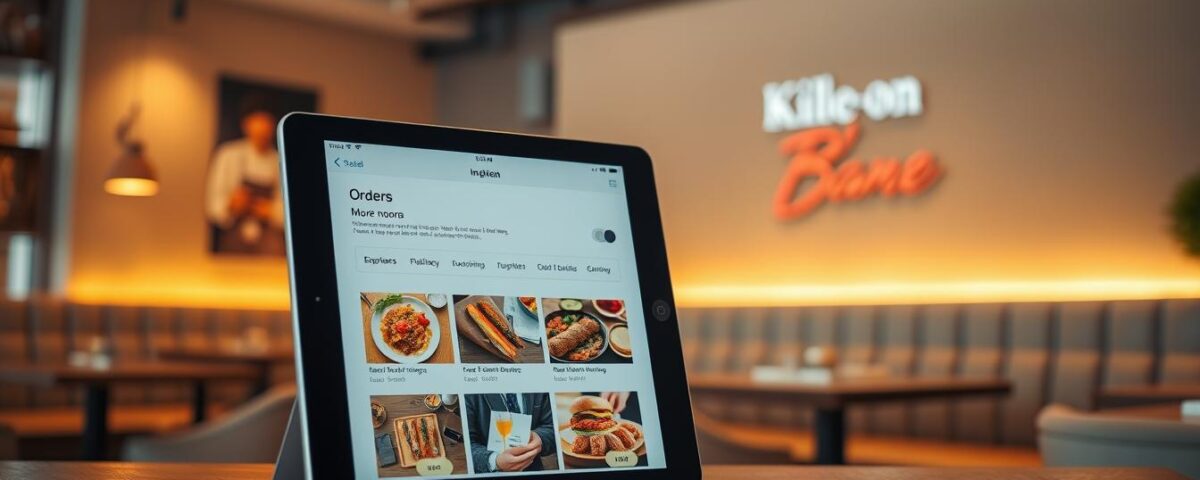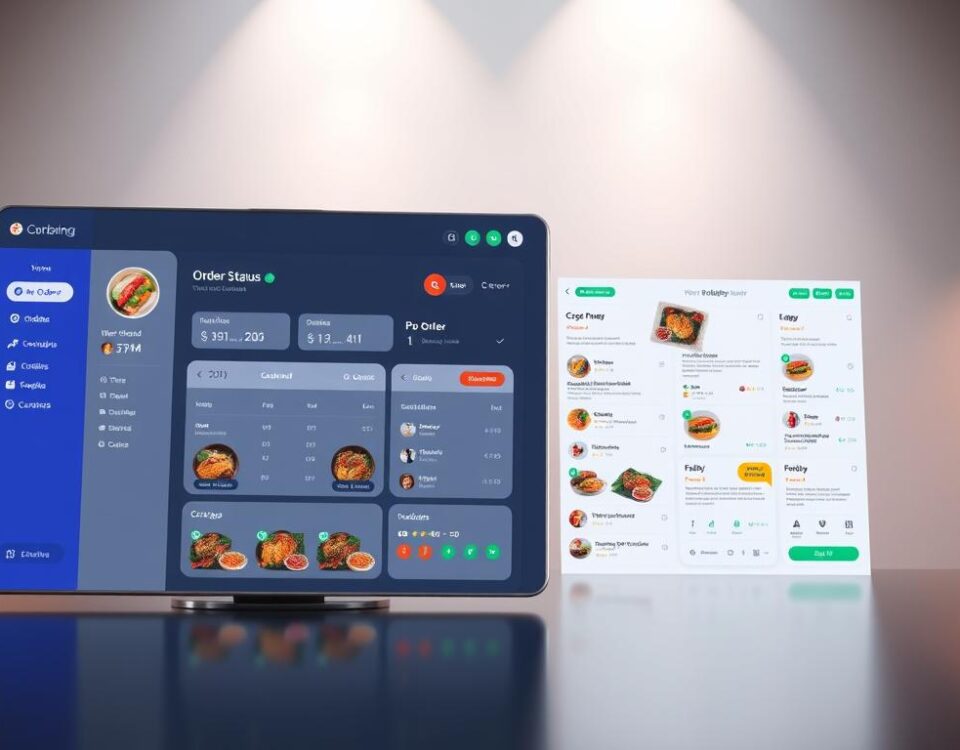
Complete Guide to Restaurant Financing: SBA Loans, Investors, and More
October 14, 2025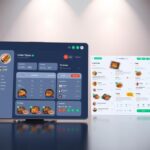
Toast vs Square vs ChowNow: Online Ordering System Comparison
October 15, 2025As a restaurant owner, you’re likely no stranger to the challenges of keeping up with the rapidly evolving landscape of online ordering. With the rise of food delivery apps and changing consumer behaviors, it’s becoming increasingly important to have a seamless online ordering experience for your customers. Did you know that online ordering now accounts for over 50% of a restaurant’s total sales in some markets?
This shift towards online ordering is not just a trend; it’s a necessity for restaurants looking to stay competitive. With so many online ordering systems available, choosing the right one can be daunting. What features should you look for? How can you ensure a smooth integration with your existing POS system? As we dive into the world of online ordering systems, you’ll discover the key factors that can make or break your restaurant’s success.
Key Takeaways
- Top online ordering systems for restaurants in 2025
- Key features to look for in an online ordering system
- How to integrate online ordering with your POS system
- The impact of online ordering on restaurant sales
- Tips for choosing the best online ordering system for your restaurant
The Changing Landscape of Restaurant Online Ordering in 2025
Restaurants in 2025 are thriving thanks to the adoption of robust online ordering systems. The restaurant landscape has undergone a significant transformation, with online ordering becoming an essential component of a successful business. Customers now expect seamless digital ordering, whether they’re opting for takeout, dine-in, or catering services.
The pandemic has permanently altered consumer behavior, with 77% of guests ordering as much or more than they did previously. Customer expectations have also evolved, with 64% considering online ordering the most important feature of a restaurant’s website. The competitive landscape now includes traditional third-party delivery apps like Uber Eats, alongside commission-free platforms and AI-powered solutions that help restaurants maintain better profit margins.
The industry’s shift towards digital ordering has led to a demand for comprehensive solutions that go beyond just ordering. Restaurants are now seeking systems that provide marketing automation, customer data collection, and seamless POS integration. Successful restaurants in 2025 are leveraging technology to create personalized ordering experiences that build customer loyalty and drive repeat business.
- A robust online ordering system is crucial for survival and growth in the restaurant industry.
- The competitive landscape includes various platforms, from traditional third-party apps to commission-free and AI-powered solutions.
- Restaurants are looking for comprehensive solutions that include marketing automation and customer data collection.
- Personalized ordering experiences are key to building customer loyalty and driving repeat business.
By adopting a robust online ordering system, restaurants can stay ahead of the competition and meet the evolving needs of their customers. As the industry continues to evolve, it’s clear that online ordering will remain a vital component of a successful restaurant business.
Why Your Restaurant Needs a Robust Online Ordering System
In today’s digital age, a robust online ordering system is no longer a luxury, but a necessity for restaurants looking to stay competitive. As consumers increasingly turn to online platforms to order food, restaurants must adapt to meet this demand.
A comprehensive online ordering system offers numerous benefits, including increased revenue streams, expanded customer reach, and operational efficiencies. By implementing such a system, restaurants can capture valuable customer data that can be leveraged for targeted marketing campaigns and personalized experiences.
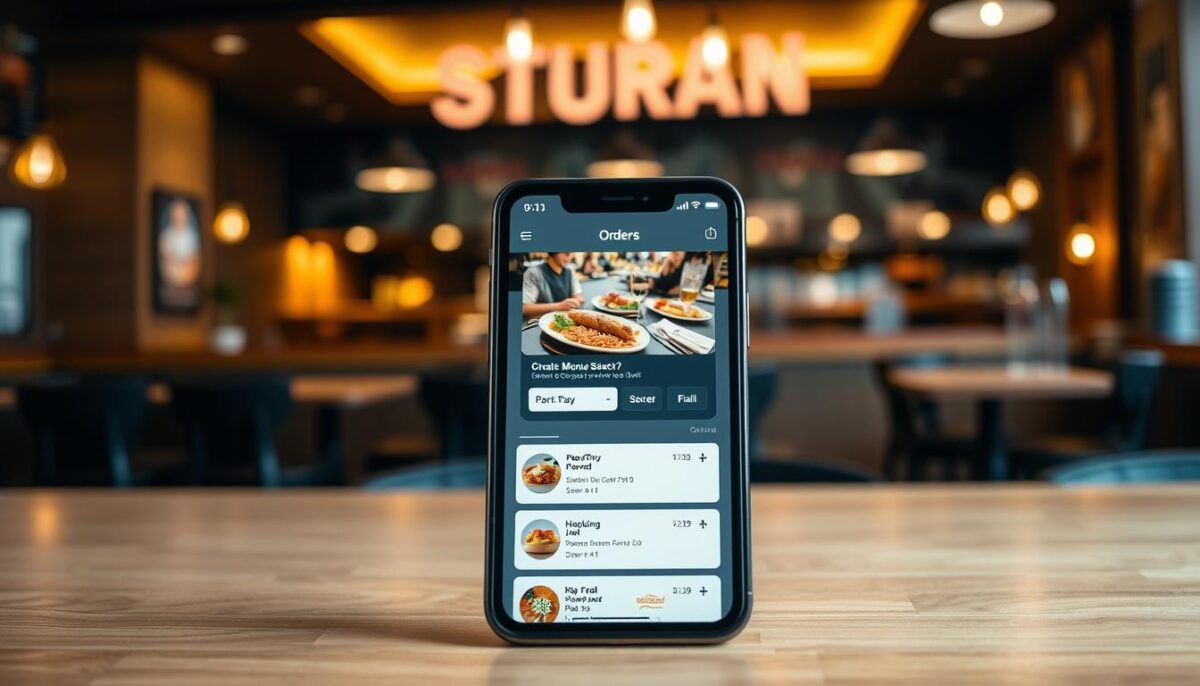
Modern online ordering systems reduce order errors by eliminating miscommunication that often occurs with phone orders, improving both customer satisfaction and operational efficiency. The ability to offer convenient ordering options such as pickup, delivery, and curbside through a single platform gives restaurants flexibility to meet diverse customer preferences and adapt to changing market conditions.
By reducing labor costs associated with taking phone orders, online ordering systems allow staff to focus on food preparation and customer service. Moreover, a direct ordering system helps restaurants build their brand identity and establish direct relationships with customers rather than relying solely on third-party marketplaces.
| Benefits | Description |
|---|---|
| Increased Revenue | Online ordering systems can increase sales by making it easier for customers to order. |
| Operational Efficiency | Automated systems reduce labor costs and minimize order errors. |
| Customer Data | Capture valuable customer data for targeted marketing campaigns. |
By implementing a robust online ordering system, restaurants can stay ahead of the competition and thrive in a rapidly evolving market.
Key Features to Look for in the Best Online Ordering System 2025
In 2025, the best online ordering systems for restaurants will be those that seamlessly integrate with existing POS systems, offer flexible payment options, and provide valuable customer insights. When evaluating an online ordering system, there are several key features to consider.
User-Friendly Interface and Mobile Compatibility
A user-friendly interface is crucial for ensuring that customers can easily navigate and place orders through the online ordering system. Mobile compatibility is also essential, as a significant portion of customers will be ordering through their mobile devices. A responsive design that works across all devices is vital for maximizing conversion rates and customer satisfaction.
POS Integration Capabilities
Robust POS integration capabilities are necessary for streamlining restaurant operations. By integrating the online ordering system with the POS system, restaurants can eliminate double-entry, synchronize inventory, and ensure that orders are fulfilled efficiently. This integration helps to reduce errors and improve customer satisfaction.
| Feature | Benefit |
|---|---|
| POS Integration | Streamlined operations, reduced errors |
| User-Friendly Interface | Improved customer satisfaction, increased conversion rates |
| Payment Processing Options | Flexible payment options, reduced processing fees |
Payment Processing Options
Offering multiple payment processing options is critical for accommodating different customer preferences. This includes credit cards, digital wallets, and other payment methods. Restaurants should also be aware of the processing fees associated with each payment method and choose an online ordering system that offers competitive rates.
Marketing and Customer Engagement Tools
Advanced marketing and customer engagement tools are essential for building lasting relationships with customers and driving repeat business. These tools may include loyalty programs, automated emails, and social media integration. By leveraging these tools, restaurants can enhance customer engagement and increase customer retention.
By considering these key features, restaurants can select an online ordering system that not only processes orders efficiently but also contributes to business growth and customer retention.
Understanding Different Types of Restaurant Online Ordering Systems
In 2025, restaurants have multiple online ordering system options, each with its unique benefits and drawbacks. The right choice can significantly impact a restaurant’s efficiency, customer satisfaction, and bottom line. There are excellent online ordering systems of every type, and many integrate with — or are built into — your point-of-sale (POS) system.
Proprietary vs. Third-Party Platforms
When selecting an online ordering system, one of the primary decisions is whether to use a proprietary or third-party platform. Proprietary systems are owned and operated by the restaurant itself, offering greater control over the customer experience and brand consistency. On the other hand, third-party platforms provide access to a broader customer base, potentially increasing order volume. For instance, using a third-party delivery app can expose a restaurant to customers who wouldn’t have otherwise known about it.
The choice between these platforms depends on the restaurant’s priorities. If maintaining brand identity and customer data is crucial, a proprietary system might be preferable. However, if the goal is to expand the customer reach quickly, a third-party platform could be more effective.
Commission-Based vs. Flat-Fee Models
Another critical consideration is the pricing model of the online ordering system. Commission-based models charge a percentage of each order, typically ranging from 15% to 30%. This model can be costly for high-volume restaurants but aligns the platform’s interests with the restaurant’s success. In contrast, flat-fee models offer predictable monthly costs, regardless of order volume, providing financial stability for restaurants with fluctuating sales.
The financial implications of these models extend beyond just the fees. Commission-based models might encourage platforms to promote certain restaurants over others, affecting customer choice. Flat-fee models, however, allow restaurants to retain more control over their pricing and promotions. Ultimately, the choice between these models should be based on the restaurant’s sales strategy and financial planning.
Menufy by HungerRush: Best Overall Restaurant Online Ordering Software
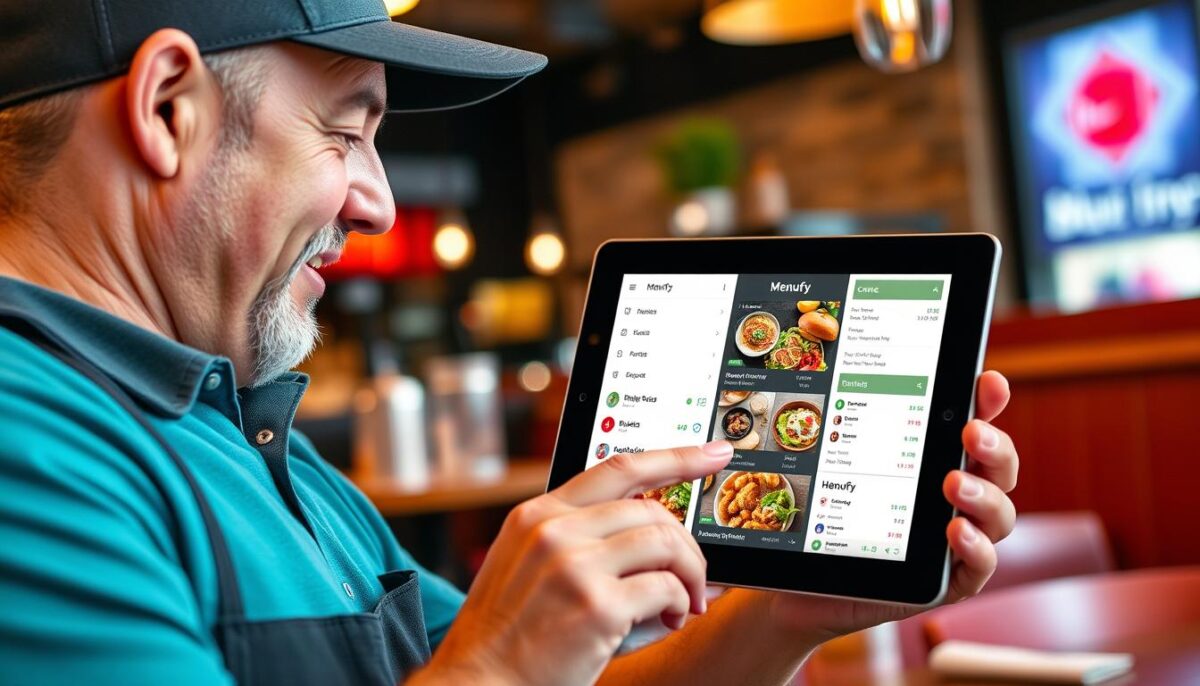
Menufy by HungerRush stands out as the best overall restaurant online ordering software in 2025. With its comprehensive and flexible platform, it serves restaurants of various sizes and types, offering a tailored solution for their online ordering needs.
Overview
Menufy by HungerRush is a leading online ordering system that provides restaurants with the tools they need to manage their digital presence effectively. Its core value proposition lies in its ability to integrate seamlessly with existing POS systems, offering a streamlined experience for both restaurants and their customers.
Pros
The standout advantages of Menufy include its option to pass the $1.75 convenience fee to customers, a central business listing site that drives new business, and exceptional 24/7 multilingual customer support. These features enhance the overall ordering experience, making it more convenient and accessible.
Cons
Despite its many benefits, Menufy has some limitations, including a 12.5% fee for delivery orders and potentially expensive marketing packages that can increase overall costs. Restaurants must weigh these costs against the benefits to determine if Menufy is the right fit for their business.
Key Features and Pricing
Menufy’s pricing structure includes a $0 monthly software fee, a per-order commission model, competitive payment processing rates, and extensive POS integration capabilities. This flexible pricing model allows restaurants to manage their costs effectively while leveraging Menufy’s robust online ordering platform.
By understanding Menufy’s features, pros, and cons, restaurants can make an informed decision about whether this ordering software is the best choice for their online ordering needs.
DoorDash Storefront: Best Third-Party Platform
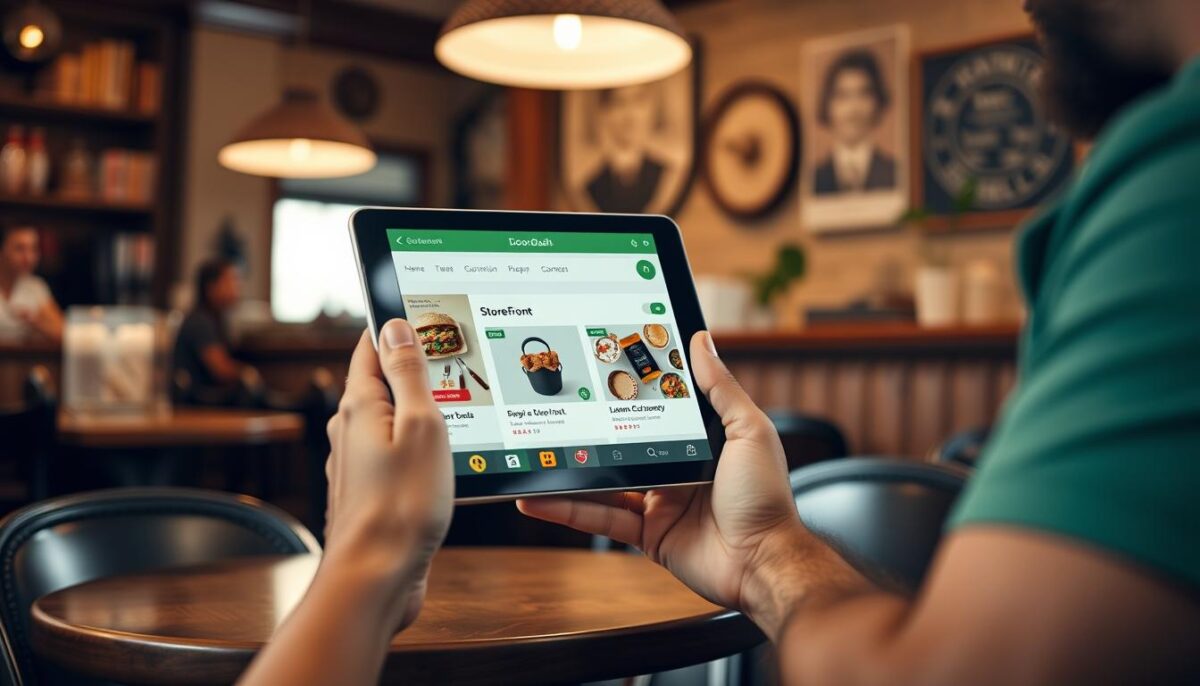
As the demand for online food ordering continues to grow, DoorDash Storefront stands out as a top choice for restaurants. This platform allows eateries to create a branded ordering experience while leveraging DoorDash’s established delivery network and technology.
Overview
DoorDash Storefront enables restaurants to maintain their brand identity while benefiting from DoorDash’s vast delivery infrastructure. This solution is particularly appealing to restaurants looking to expand their reach without sacrificing control over the customer experience.
Pros
The key advantages of DoorDash Storefront include no long-term contracts, allowing restaurants to test the platform without significant financial risk. Additionally, restaurants retain ownership of customer data, which is crucial for marketing and customer engagement. The platform also offers promotional commission-free periods, further reducing the financial burden on restaurants.
Cons
Despite its benefits, DoorDash Storefront has some limitations. Restaurants using their own drivers face steep fees, which can eat into profit margins. Moreover, being locked into DoorDash’s payment processing can be restrictive. The setup process can also be lengthy, taking up to three weeks.
Key Features and Pricing
DoorDash Storefront’s pricing structure is competitive, with fees comparable to other third-party platforms like Uber Eats. The platform offers a range of features, including integrated marketing tools and detailed analytics, to help restaurants optimize their online ordering experience. Restaurants can expect to pay a commission on orders, with the exact rate varying based on the agreement with DoorDash.
Toast: Best Native POS Online Ordering System
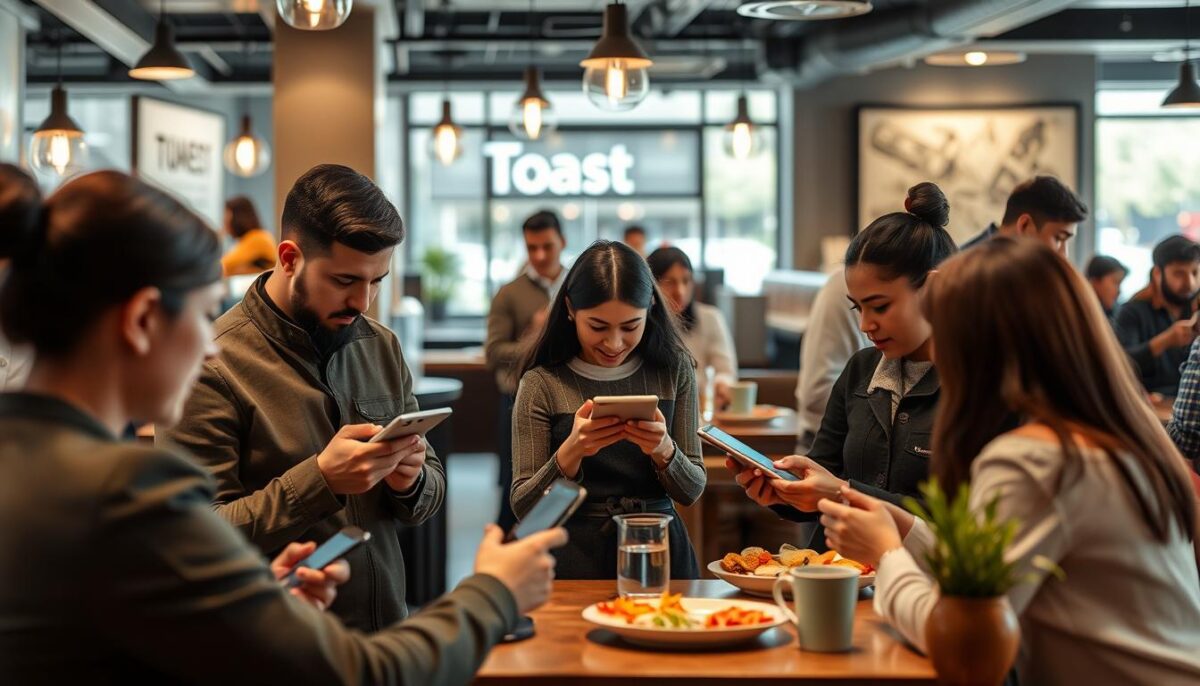
In the ever-evolving landscape of restaurant technology, Toast stands out as a premier native POS online ordering system. Toast’s integrated approach creates a seamless connection between in-person and online operations, eliminating the need for third-party connections.
Overview of Toast’s Capabilities
Toast is both a comprehensive POS system and a robust online ordering platform. This integration allows restaurants to manage their in-store and online operations from a single dashboard, streamlining their workflow and improving efficiency.
Pros of Using Toast
Toast offers several impressive features, including QR code ordering tools and flexible delivery management options that support both in-house and third-party drivers. The Toast TakeOut app helps restaurants acquire new customers and increase their online presence.
Cons of Toast’s Online Ordering System
While Toast offers many benefits, it is exclusive to the Toast POS ecosystem, requiring a two-year contract commitment and a hardware investment that increases initial costs.
Key Features and Pricing
Toast’s cloud-based architecture ensures business continuity even during internet outages. The pricing structure is competitive, and the system’s features make it an attractive option for restaurants seeking to streamline their online ordering and POS operations.
Different types of restaurants are leveraging Toast’s integrated system to create a cohesive customer experience across all ordering channels. By using Toast, restaurants can improve their online ordering capabilities and enhance their overall customer service.
Tock: Best for Meal Kits and Family-Style Orders
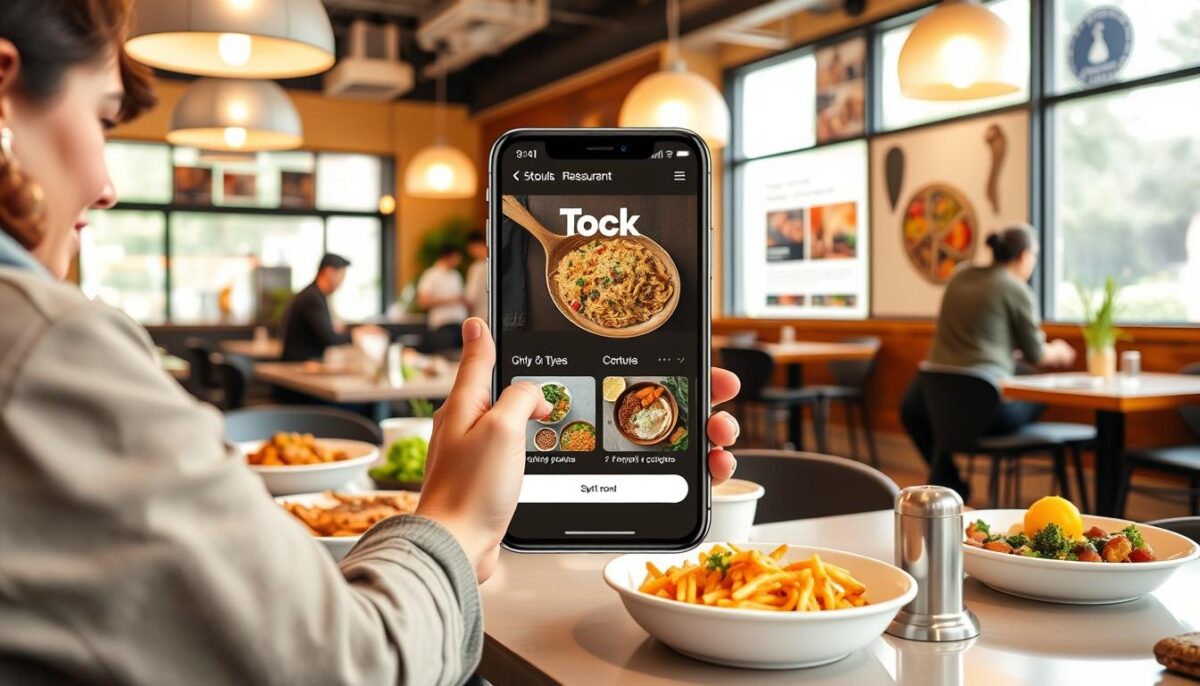
In the evolving landscape of restaurant online ordering, Tock stands out for its ability to handle sophisticated meal kits and family-style orders. Originally known for its fine dining reservation capabilities, Tock has expanded its services to support high-end takeout and delivery options.
Overview of Tock’s Capabilities
Tock’s online ordering platform is designed to cater to restaurants that offer complex meal kits and family-style orders. Its system is built to handle the nuances of these orders, ensuring that customers can easily place and customize their orders online.
Advantages of Using Tock
Tock offers several benefits, including a fee-based model that allows restaurants to pay only for what they use. This model is particularly advantageous for establishments with fluctuating order volumes. Additionally, Tock’s platform helps new customers discover your restaurant, and it’s popular among high-profile independent restaurants.
- No long-term contract: Tock doesn’t require restaurants to sign lengthy contracts, providing flexibility.
- Fee-based model: Restaurants pay only for the orders they process, making it a cost-effective solution.
- Discovery platform: Tock’s site helps attract new customers to your restaurant.
- Popular among high-end restaurants: Many prestigious independent restaurants use Tock for their online ordering needs.
Limitations of Tock
While Tock offers many benefits, it also has some limitations. These include limited direct POS integrations, with only Toast and Lightspeed being supported. Additionally, Tock has restricted customization options and only supports Braintree and Stripe for payment processing.
Key Features and Pricing
Tock’s pricing model is commission-based, charging 3% per order, with no monthly software fee. This structure makes it accessible to restaurants of various sizes. Tock’s key features include its ability to handle complex orders, a user-friendly interface, and integration with popular POS systems.
Square Online: Best Free Restaurant Online Ordering Site

For restaurants looking for a cost-effective online ordering solution, Square Online stands out as a top choice. As a comprehensive restaurant management platform, Square Online provides an accessible entry point for businesses with limited budgets.
Overview
Square Online is not just an online ordering system; it’s a robust ecommerce platform that integrates seamlessly with Square’s payment processing capabilities. This integration allows restaurants to manage their online presence and payment processing in one place, streamlining operations and reducing costs.
Pros
One of the key advantages of Square Online is its completely free ecommerce site offering. The setup process is straightforward, making it easy for restaurants to get started quickly. Additionally, Square Online includes integrated delivery management tools, allowing restaurants to manage their delivery operations efficiently. The extensive user community provides peer support, which can be invaluable for troubleshooting and best practices.
Cons
While Square Online offers many benefits, there are some limitations to consider. For instance, restaurants are locked into using Square as their only payment processor, which may not be ideal for all businesses. Additionally, the POS integration options are limited, which could be a drawback for restaurants that rely on specific POS systems. There have also been reports of durability issues with some of Square’s hardware components.
Key Features and Pricing
Square Online’s pricing structure is designed to be accessible. The base plan is free, making it an attractive option for new or small restaurants. However, payment processing fees apply (2.9% + 30¢ per transaction). Optional premium features are available for businesses that need additional functionality. Restaurants can leverage Square Online to establish a digital presence without a significant upfront investment, making it an excellent choice for businesses looking to grow their online ordering capabilities.
Many restaurants have successfully used Square Online to enhance their online ordering and delivery operations. For example, a small café was able to increase its online sales by 20% within the first month of using Square Online. Such success stories highlight the potential of Square Online to support restaurants of various sizes in achieving their online ordering goals.
Restolabs: Best for Payment Flexibility
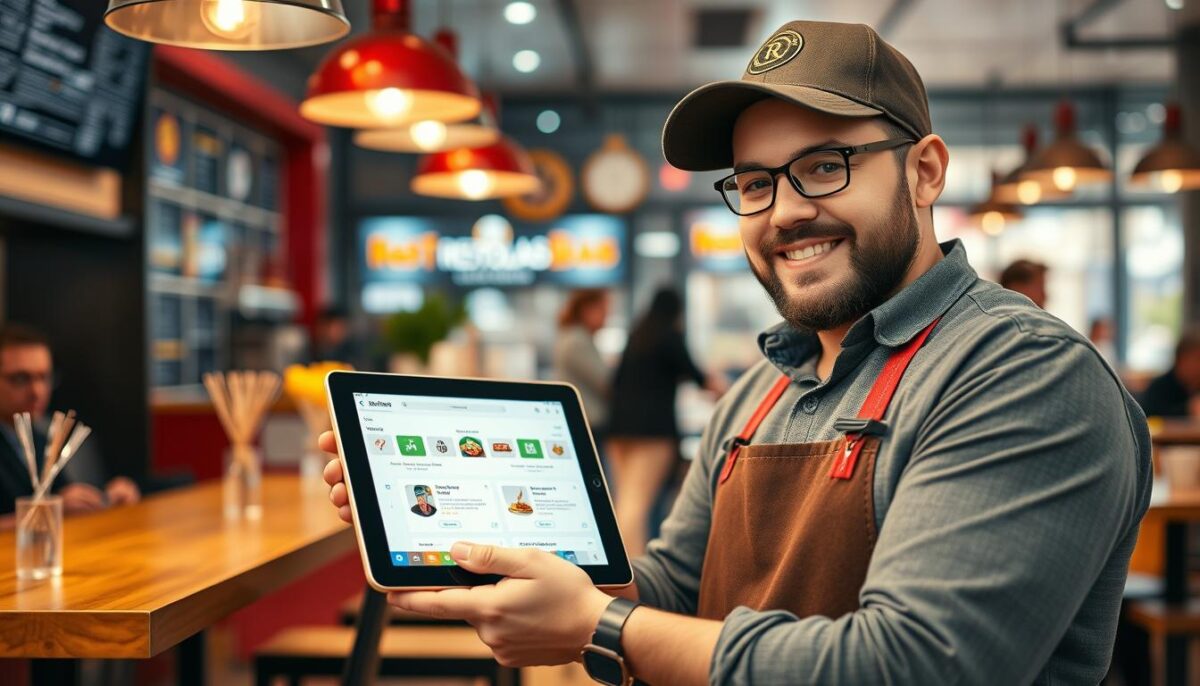
Restolabs stands out as a premier online ordering system, offering restaurants unparalleled payment flexibility in 2025. This robust platform is designed to meet the evolving needs of restaurants, providing a seamless online ordering experience for customers.
Overview
Restolabs is an affordable and feature-rich online ordering system that supports over 30 payment processors, including Authorize.net, PayPal, Stripe, and Square. This flexibility allows restaurants to choose the payment processing option that best suits their needs, potentially reducing costs.
Pros
Restolabs offers several key advantages, including a 14-day free trial, integration with Tookan for in-house delivery management, and a sophisticated menu modifier system. These features enable restaurants to test the platform, manage deliveries efficiently, and ensure order accuracy.
Cons
While Restolabs offers many benefits, it has some limitations. The platform lacks a native site to drive new customer acquisition, and POS integration is restricted to Enterprise memberships. Additionally, third-party delivery integrations require Premium subscriptions.
Key Features and Pricing
Restolabs’ pricing structure is designed to accommodate various restaurant needs. The platform’s key features include customizable menus, advanced modifiers, and flexible payment options. By allowing restaurants to shop for the lowest processing rates or even operate on a cash-only basis, Restolabs provides a cost-effective solution for online ordering.
Owner.com: Best for AI-Powered Growth and Cost Savings

Owner.com is at the forefront of the online ordering revolution, providing restaurants with a cutting-edge platform that combines AI-driven insights with cost-effective solutions. This comprehensive online ordering system is designed to help restaurants amplify their online presence while curtailing operational expenditures.
Overview
Owner.com distinguishes itself as a comprehensive online ordering platform meticulously crafted to aid restaurants in amplifying their online presence while simultaneously curtailing operational expenditures. It transcends the functionality of a mere online ordering solution by furnishing an AI-powered website, ingeniously optimized for prominent search engines.
Pros
Commission-free online ordering model and a flat-fee delivery management system are among Owner.com’s key advantages, eliminating costly third-party app fees. Additionally, the inclusion of a branded mobile app fosters direct customer relationships, enhancing customer loyalty and retention.
Cons
Despite its numerous benefits, Owner.com’s customized pricing model may lack upfront transparency, potentially causing confusion for some restaurant owners. Moreover, the potential learning curve for restaurants unfamiliar with AI-driven platforms could be a challenge. Businesses heavily dependent on third-party marketplaces for customer acquisition might also find Owner.com’s approach limiting.
Key Features and Pricing
Owner.com’s feature set includes an AI-powered website optimized for search engines, a branded mobile app, and a flat-fee delivery management system. While the pricing is customized, the potential for significant cost savings through reduced commission fees and increased direct sales can make it an attractive option for many restaurants.
ChowNow: Best for Independent Restaurants
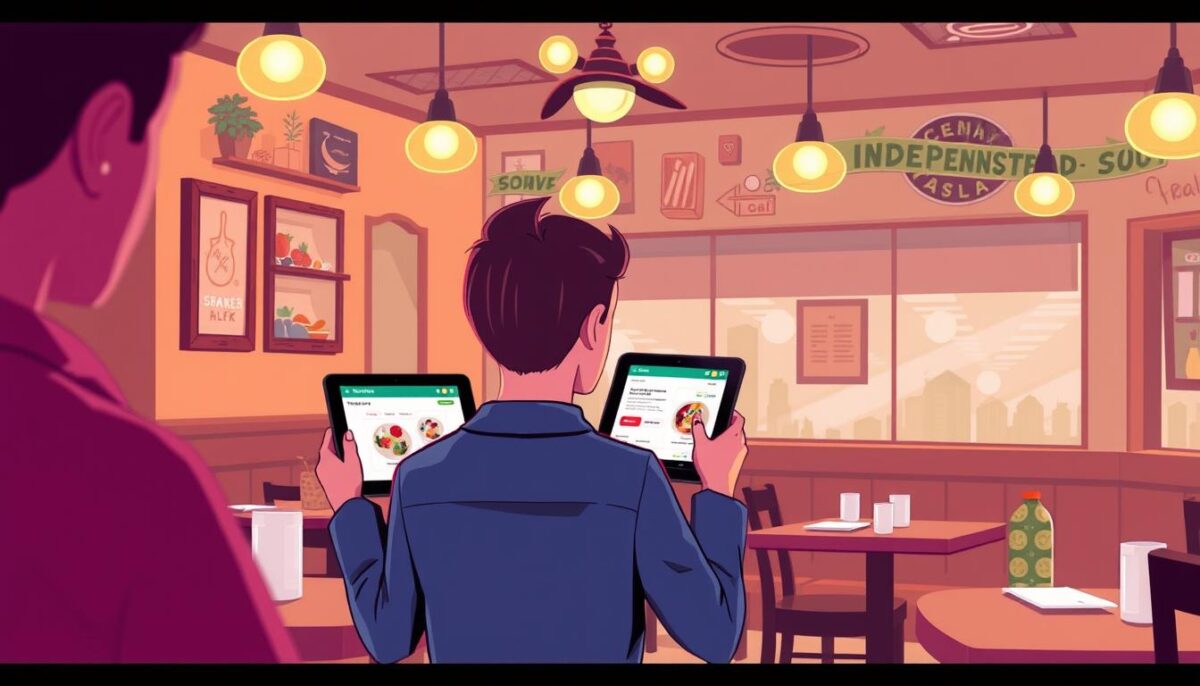
For independent restaurants, ChowNow offers a compelling online ordering solution that prioritizes commission-free transactions. This key feature allows restaurants to retain more of their revenue, making ChowNow an attractive option for smaller establishments looking to maximize their profits.
Overview of ChowNow
ChowNow is an online ordering platform that has strategically positioned itself to support independent restaurants. By providing a commission-free online ordering experience, ChowNow enables these businesses to keep a larger portion of their hard-earned revenue. This approach not only benefits the restaurants financially but also fosters a more direct relationship between the restaurants and their customers.
Pros of Using ChowNow
One of the significant advantages of ChowNow is its comprehensive suite of tools for managing online orders and delivery logistics. Additionally, ChowNow offers strong customer support tailored to the needs of independent operators. The platform also emphasizes building direct customer relationships through branded websites and mobile apps, enhancing customer loyalty and retention.
Cons of Using ChowNow
While ChowNow offers numerous benefits, it also has some limitations. The platform charges a relatively high setup fee, which may be a barrier for some restaurants. Furthermore, the monthly subscription cost could be challenging for very small operations. ChowNow’s customization options are also somewhat limited compared to dedicated website builders.
Key Features and Pricing
ChowNow’s pricing structure includes a setup fee and a monthly subscription cost. The platform’s key features include commission-free online ordering, comprehensive order management tools, and customer support. By providing a detailed breakdown of ChowNow’s pricing and features, independent restaurants can make an informed decision about whether this platform meets their needs.
Real customer testimonials highlight both the strengths and areas for improvement in ChowNow’s platform. These testimonials provide valuable insights for potential users, giving them a balanced perspective on what to expect from ChowNow.
BentoBox: Best for Upscale Restaurants
In the realm of upscale dining, BentoBox emerges as a leading online ordering solution, providing restaurants with a robust platform to manage their online presence.
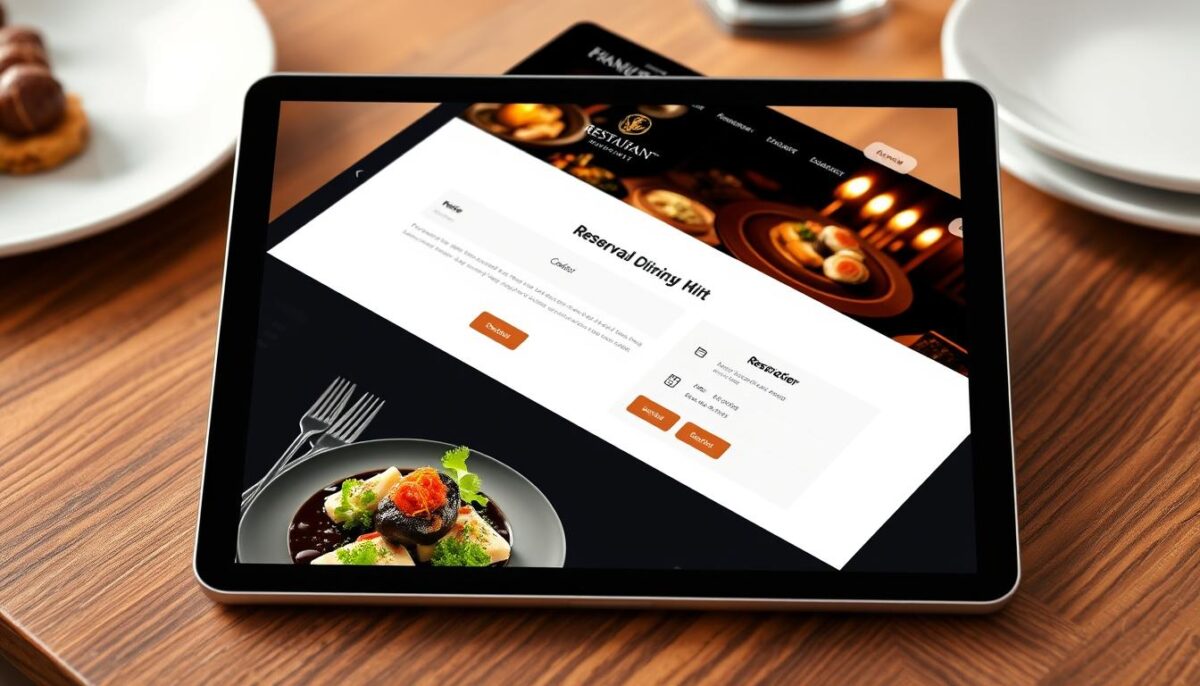
Overview
BentoBox is more than just an online ordering system; it’s a comprehensive platform designed to help upscale restaurants manage their entire online presence. With BentoBox, restaurants can create a visually stunning and highly responsive website that integrates online ordering, takeout management, delivery services, event organization, and reservation systems.
This integrated approach ensures a cohesive and engaging online experience for customers, reflecting the premium brand identity of upscale restaurants.
Pros
BentoBox offers several key advantages for upscale restaurants. Its ability to capture detailed diner data allows for personalized hospitality, enhancing the customer experience. The platform’s sophisticated design options maintain brand consistency across digital touchpoints, ensuring a seamless and luxurious experience for customers.
Additionally, BentoBox’s integrated approach to online presence management streamlines operations, making it easier for restaurants to manage their online services.
Cons
While BentoBox offers numerous benefits, it also has some limitations. One of the primary concerns is the lack of transparent pricing information, which can make it difficult for restaurants to anticipate costs. Additionally, the platform’s complexity may overwhelm restaurants seeking only basic ordering functionality.
Furthermore, the dependence on BentoBox for ongoing website hosting and management may be a concern for some establishments.
Key Features and Pricing
BentoBox’s feature set includes a range of tools designed to enhance the online dining experience, from online ordering and delivery integration to event management and reservation systems. While specific pricing details are not readily available, BentoBox’s focus on creating cohesive, branded digital experiences makes it a valuable solution for upscale restaurants where presentation and customer experience are paramount.
CloudWaitress: Most Affordable Smartphone Ordering App

For restaurants looking to establish a digital presence, CloudWaitress offers a cost-effective solution. As the most affordable smartphone ordering app, CloudWaitress is particularly appealing to small businesses and startups in the restaurant industry.
Overview of CloudWaitress
CloudWaitress is an affordable online ordering solution that offers a free starter subscription for up to 100 orders per month. This makes it an ideal entry point for restaurants just beginning their digital journey. With CloudWaitress, restaurants can easily manage their online orders and enhance their customer experience.
Pros of Using CloudWaitress
The key advantages of CloudWaitress include its support for multiple payment processors, giving restaurants financial flexibility. Additionally, CloudWaitress offers an optional custom-built smartphone ordering app that enhances brand identity. The versatile order notification system works through multiple channels, ensuring that restaurants stay informed about incoming orders.
Cons of Using CloudWaitress
While CloudWaitress offers many benefits, it also has some limitations. Notably, it lacks an aggregating platform to help restaurants acquire new customers. Furthermore, CloudWaitress does not have direct POS integrations, which may require manual order entry.
Key Features and Pricing
CloudWaitress offers a tiered pricing structure, with a free starter plan and affordable premium options. This makes sophisticated online ordering technology accessible to restaurants with limited budgets. Small restaurants and food trucks are using CloudWaitress to establish a digital presence and accept online orders without significant upfront investment or technical expertise.
By choosing CloudWaitress, restaurants can enjoy a seamless online ordering experience that is both affordable and efficient. With its user-friendly interface and robust features, CloudWaitress is an excellent choice for restaurants looking to enhance their online ordering capabilities.
Comparing Pricing Models of Top Online Ordering Systems
In 2025, choosing the right online ordering system for your restaurant involves more than just comparing features; it requires a deep dive into pricing structures. Understanding these costs is crucial for maximizing profits and making informed decisions about your online ordering setup.
Monthly Subscription Fees
Online ordering systems employ various pricing models, starting with monthly subscription fees. Some platforms, like Menufy and Square Online, offer free options, while others have tiered subscription models. For instance, Toast’s fees range from $0 to $69 per month, and CloudWaitress charges between $0 and $299 monthly. The higher tiers often justify additional features such as advanced analytics, marketing tools, and priority customer support.
| Platform | Monthly Fee Range |
|---|---|
| Menufy | Free |
| Square Online | Free |
| Toast | $0 – $69 |
| CloudWaitress | $0 – $299 |
Commission Structures
The commission structures vary significantly across platforms. Menufy charges a flat fee of $1.75 per order, while DoorDash and Tock use percentage-based models, charging between 15-30% and 3% per order, respectively. Some platforms offer commission-free options, which can be beneficial for high-volume restaurants.
Payment Processing Rates
Payment processing rates are another critical cost factor. Toast charges between 2.49% + 15¢ and 3.69% + 15¢ per transaction, while many other providers charge a standard rate of 2.9% + 30¢. Some systems allow restaurants to choose their own payment processor, potentially reducing costs.
Hidden Costs to Watch For
Beyond the obvious costs, there are several hidden fees to be aware of, including setup fees, hardware requirements, marketing add-ons, premium support packages, and early termination penalties. These can significantly impact the total cost of ownership.
To make a financially sound decision, it’s essential to calculate the total cost of ownership based on your restaurant’s specific order volume, average ticket size, and business model. By understanding the various pricing components, you can choose an online ordering system that aligns with your business needs and budget.
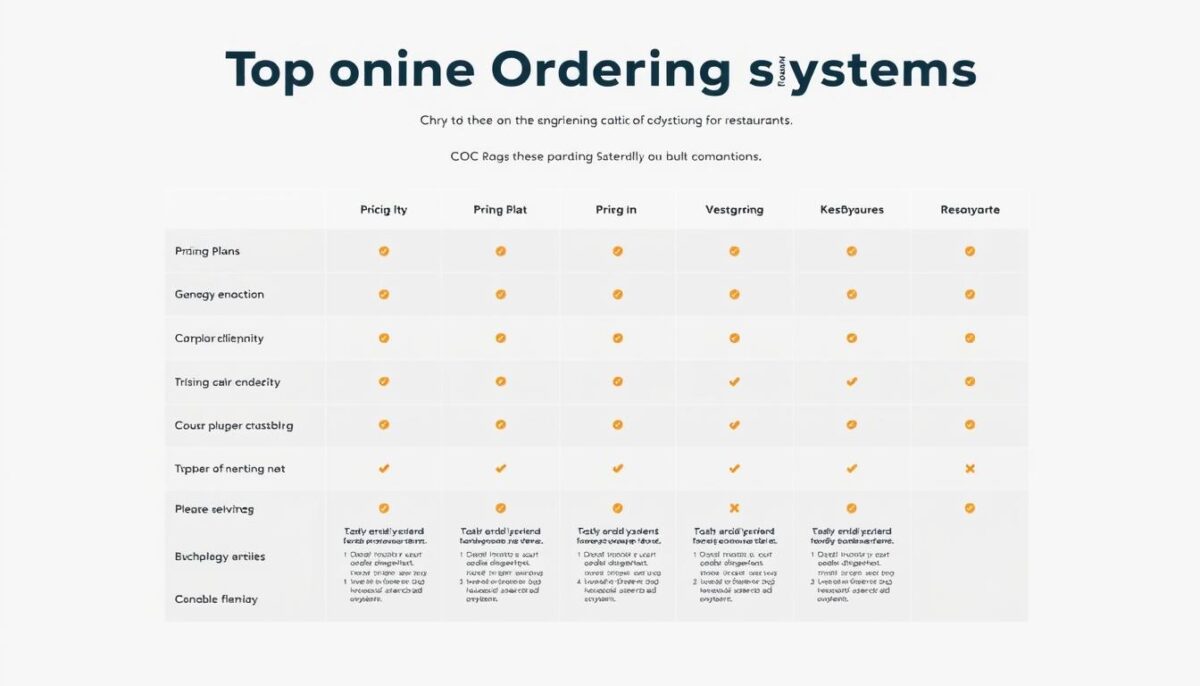
How I Evaluated These Restaurant Online Ordering Systems
To determine the best online ordering systems for restaurants, I considered several key factors. My evaluation was comprehensive, covering various aspects that are crucial for a restaurant’s success in the digital age.
Pricing Considerations
Pricing is a critical factor for restaurants when choosing an online ordering system. I assessed each platform’s cost structure, including free plan availability, subscription fees under $75 monthly, commission rates, payment processing fees, and contract requirements. This helped determine the overall affordability and value of each system.
| Pricing Factor | Description | Importance |
|---|---|---|
| Free Plan Availability | Whether the platform offers a free plan | High |
| Subscription Fees | Monthly fees under $75 | Medium |
| Commission Rates | Percentage of sales taken by the platform | High |
General and Expanded Features
I evaluated the general and expanded features of each online ordering system, including branded websites, customer discovery tools, payment flexibility, marketing capabilities, delivery integrations, pickup options, and customer data ownership. These features are essential for creating a truly effective ordering system.
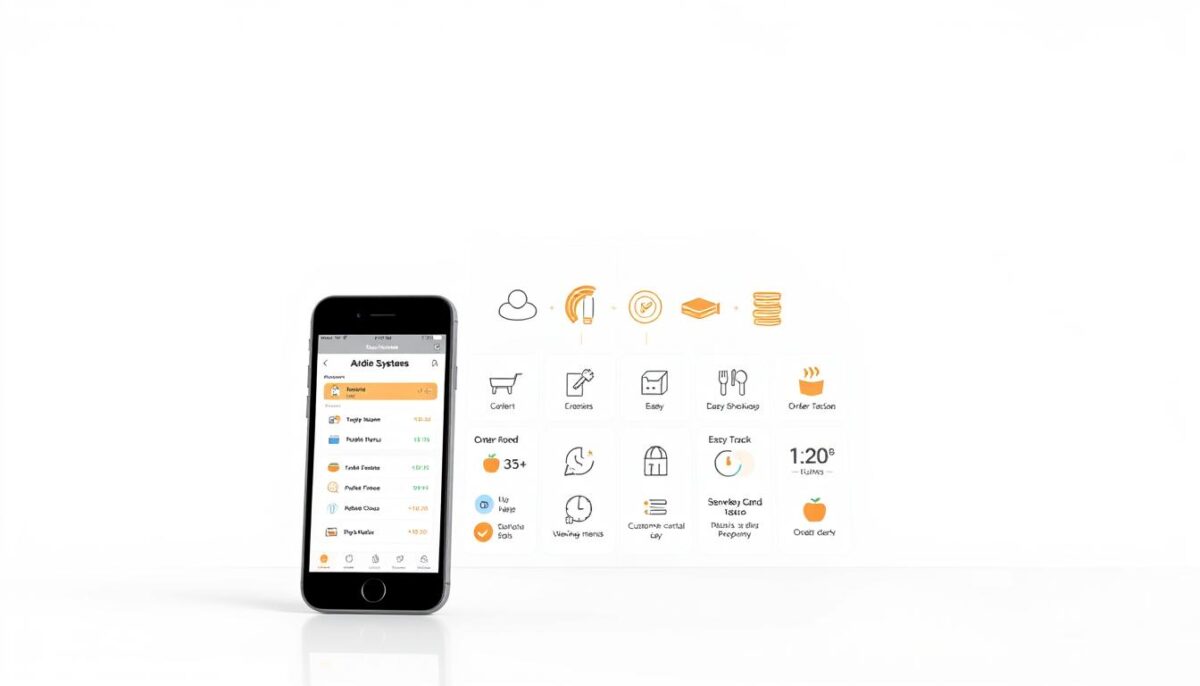
Ease of Use and Integration
The ease of use and integration of each platform was also a crucial consideration. I assessed user-friendliness, POS integration capabilities, API flexibility, order throttling features, and setup processes. A system that is too complex to implement can be a significant barrier for restaurants.
Customer Support and Reliability
Customer support and reliability are vital for ensuring business continuity. I examined the availability of 24/7 assistance, support channels, response times, system uptime guarantees, and backup procedures. These factors contribute significantly to the overall reliability of an online ordering system.
In conclusion, my evaluation of restaurant online ordering systems was thorough and based on real-world usability. By considering pricing, features, ease of use, and customer support, I was able to provide a comprehensive assessment of the top online ordering systems for restaurants.
Conclusion: Finding Your Perfect Online Ordering Partner in 2025
As restaurants continue to adapt to the digital age, the importance of a well-chosen online ordering system cannot be overstated. In this comprehensive review, we’ve explored various online ordering platforms that can transform a restaurant’s business model, helping them not just survive but thrive in the increasingly digital landscape of 2025 and beyond.
Each of the systems reviewed has its distinctive strengths. For instance, Menufy stands out for its overall excellence, while Owner.com impresses with its AI-powered growth capabilities. On the other hand, CloudWaitress offers an affordable solution for restaurants looking to implement a smartphone ordering app. The key is to identify which system aligns best with your restaurant’s unique characteristics, including size, cuisine type, customer demographics, technical capabilities, and growth objectives.
When selecting an online ordering partner, it’s crucial to consider not just the current needs of your restaurant but also its future growth. The right online ordering system should be scalable, offering additional features that can be activated as your operation expands and your digital strategy evolves. This scalability ensures that your investment continues to yield benefits over time.
To make an informed decision, restaurant owners should take practical steps such as taking advantage of free trials, requesting demos, speaking with current users, and carefully reviewing contracts before making a final decision. By doing so, you can ensure that the chosen online ordering platform meets your restaurant’s specific needs and contributes to its success in the digital marketplace.
In conclusion, the right online ordering system can be a powerful tool for restaurants, enhancing their customer experience, streamlining order management, and ultimately driving sales. By carefully evaluating the options and considering your restaurant’s unique needs, you can find the perfect online ordering partner to help your business thrive in 2025 and beyond.
FAQ
What is the average commission fee charged by third-party online ordering platforms?
The average commission fee charged by third-party online ordering platforms, such as Uber Eats, can range from 10% to 30% per order, depending on the agreement and services provided.
How do I integrate an online ordering system with my existing POS system?
To integrate an online ordering system with your existing POS system, you typically need to choose a compatible online ordering platform that supports your POS provider, such as Toast or Square, and follow their setup instructions.
Can I customize my online ordering menu to reflect my restaurant’s branding?
Yes, most online ordering systems, such as ChowNow or BentoBox, allow you to customize your menu to match your restaurant’s branding, including logos, colors, and menu item descriptions.
What kind of customer support can I expect from online ordering system providers?
Reputable online ordering system providers, such as Menufy by HungerRush or Restolabs, typically offer various levels of customer support, including phone, email, and online chat support, to help resolve any issues or concerns.
Are online ordering systems secure and compliant with payment industry standards?
Yes, most online ordering systems are designed with security and compliance in mind, using measures such as SSL encryption and PCI-DSS compliance to protect customer payment information.
Can I use an online ordering system for catering or large group orders?
Yes, many online ordering systems, such as Tock, offer features specifically designed for catering or large group orders, including customizable menus and streamlined ordering processes.
How do online ordering systems handle order fulfillment and delivery integration?
Online ordering systems often integrate with third-party delivery providers, such as DoorDash or Uber Eats, or allow for in-house delivery management, streamlining the order fulfillment process.
What are the benefits of using a native POS online ordering system?
Using a native POS online ordering system, such as Toast, can provide a seamless integration with your existing POS system, reducing errors and improving order management efficiency.
